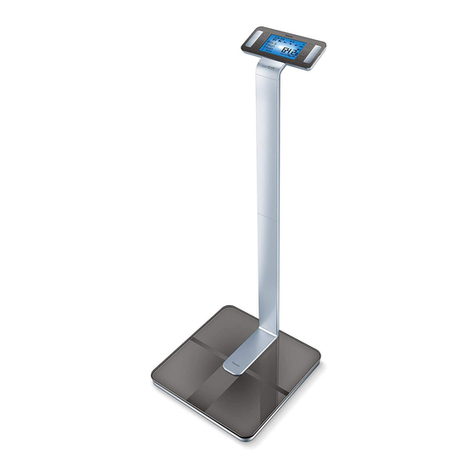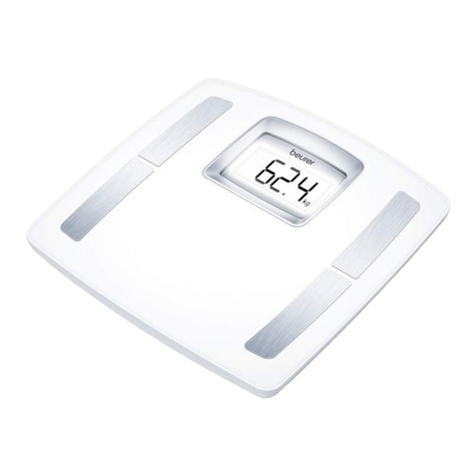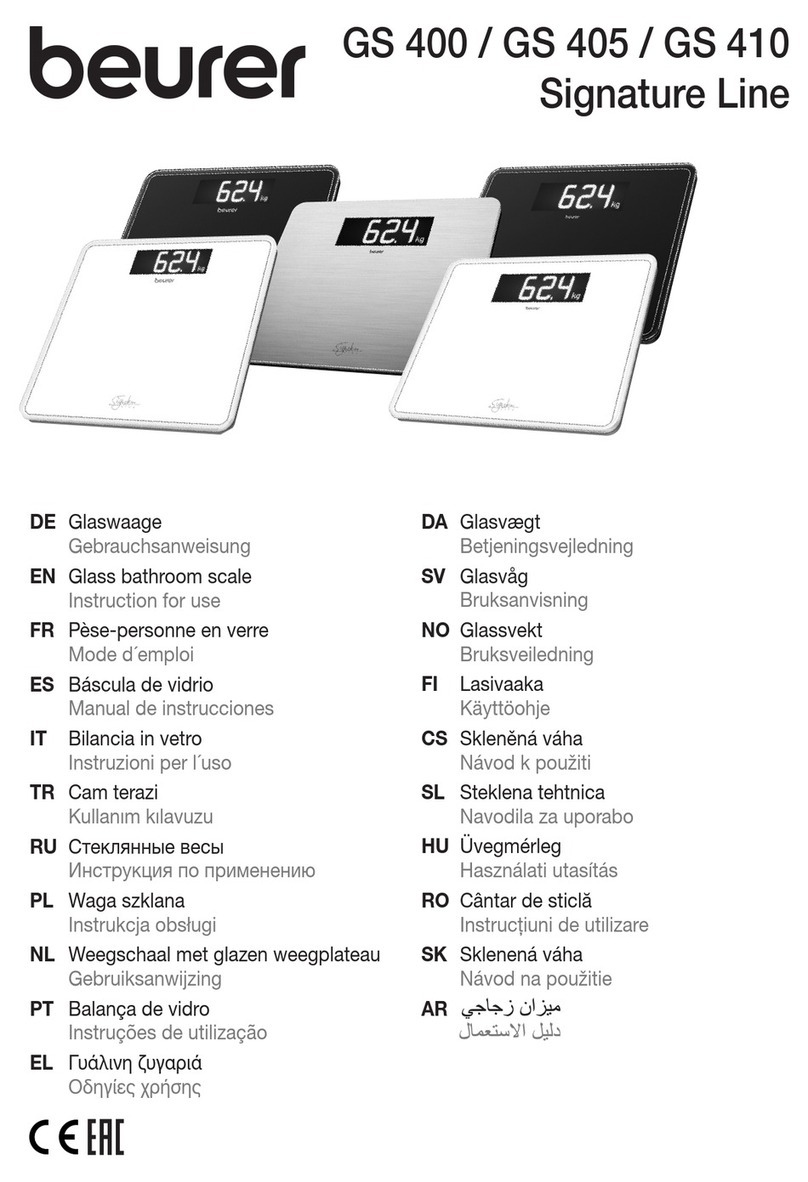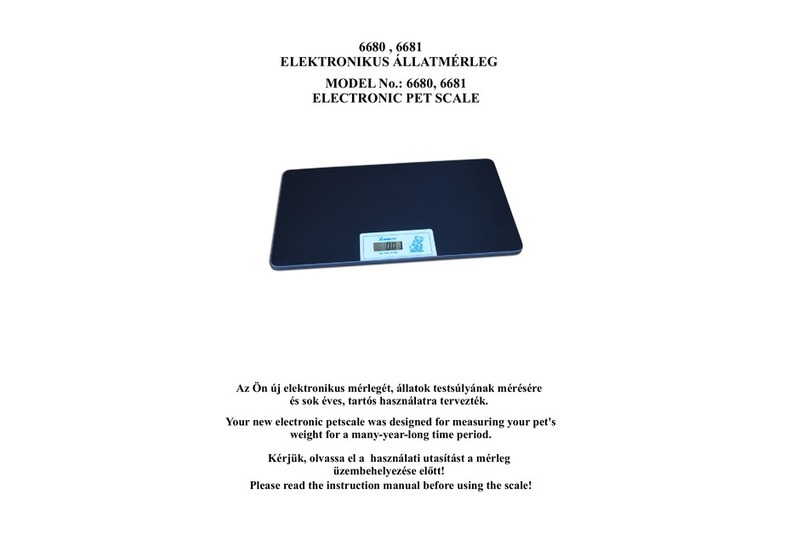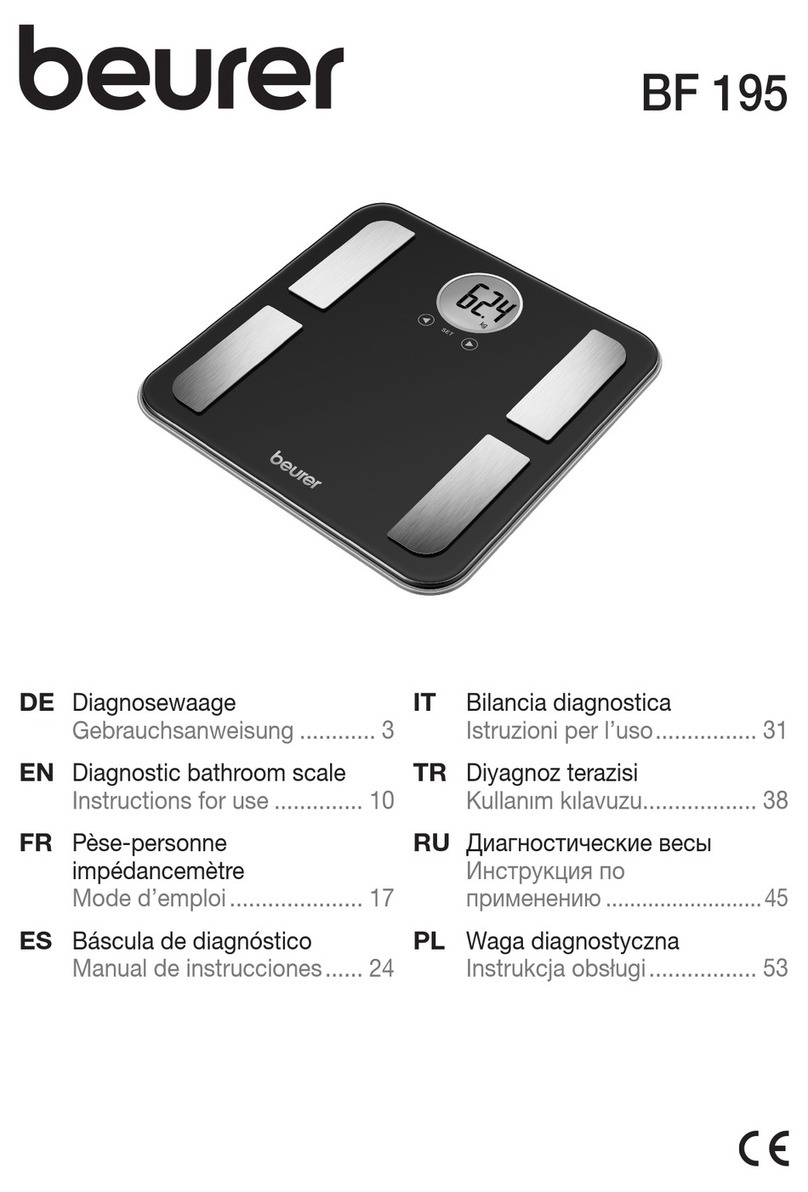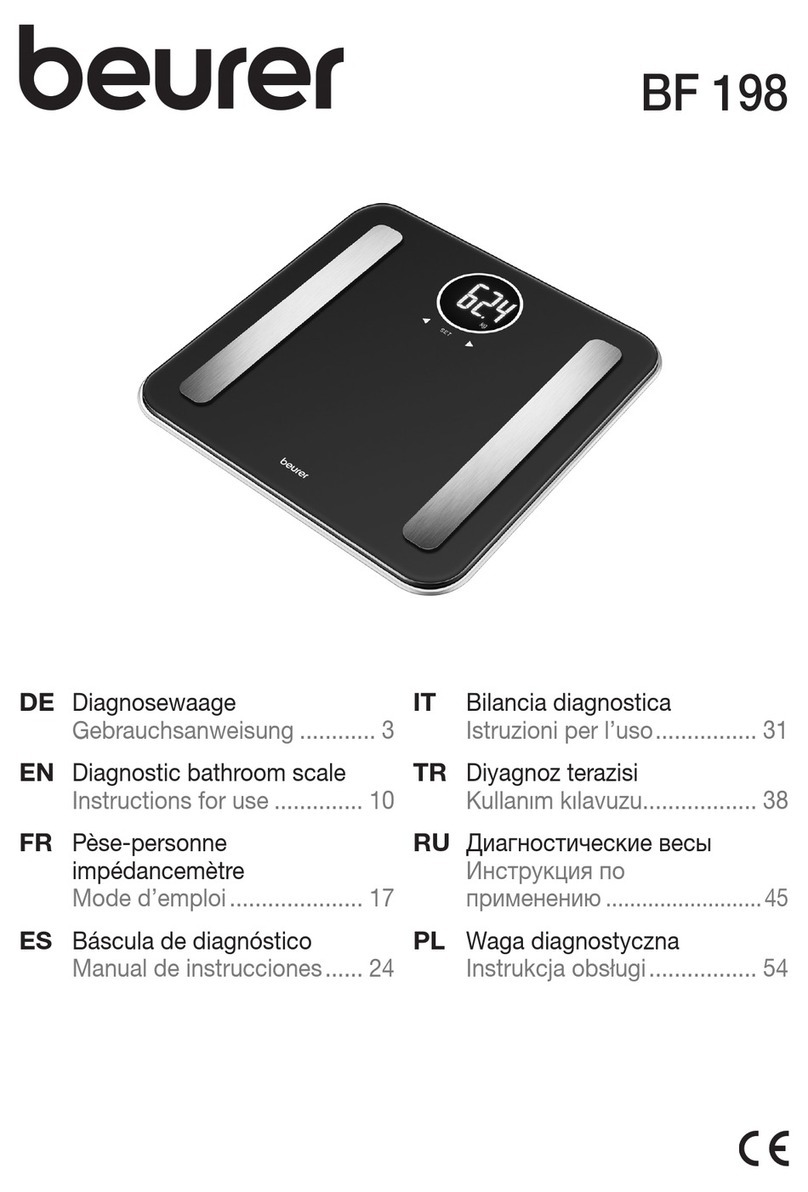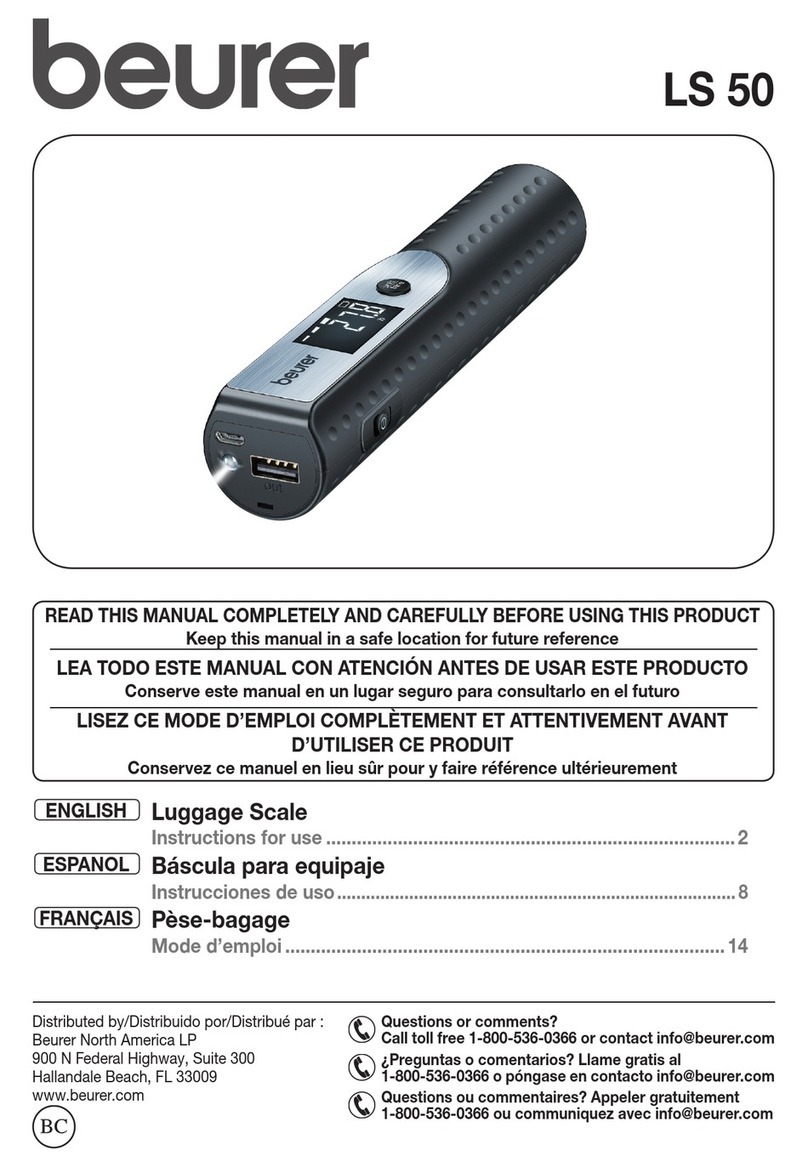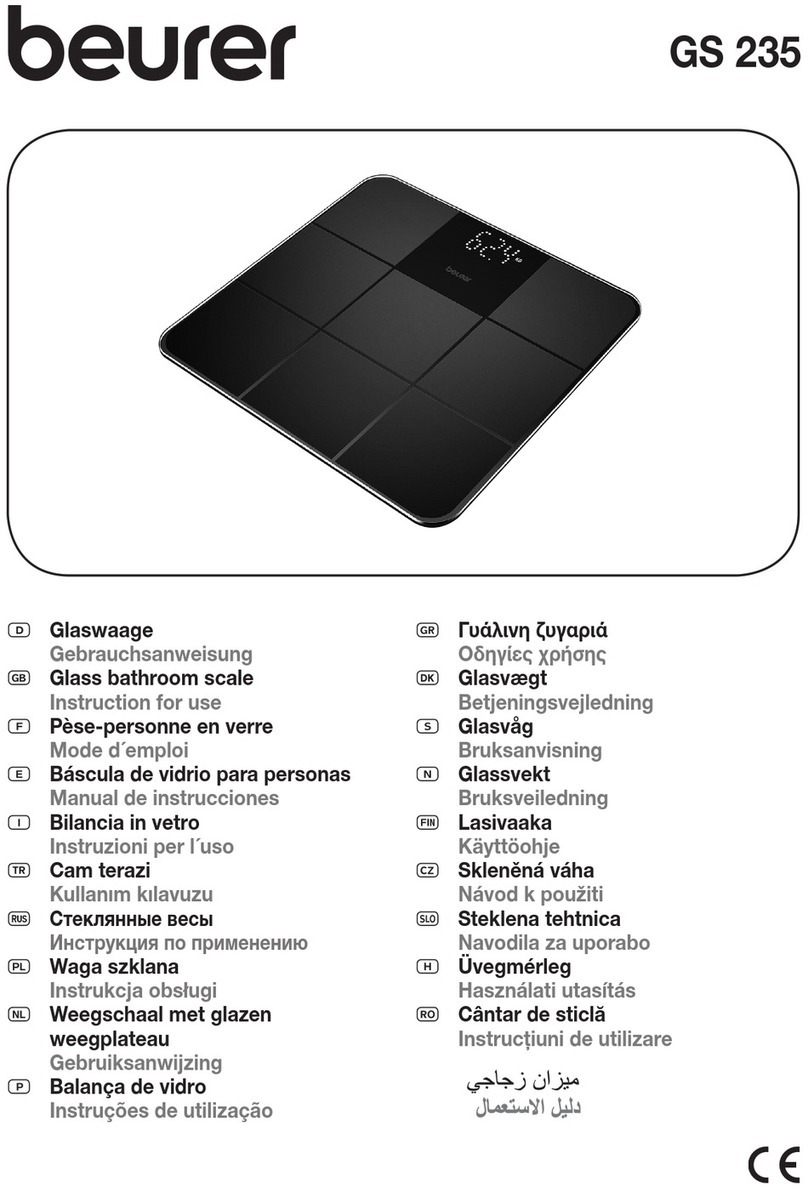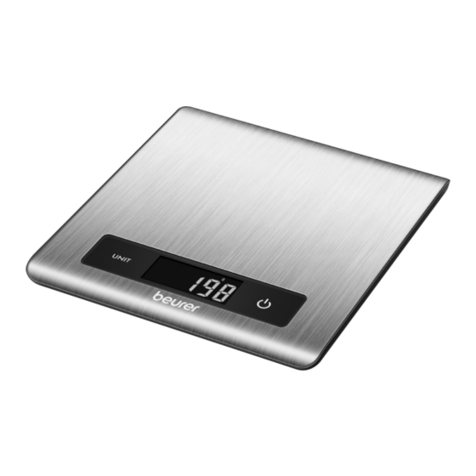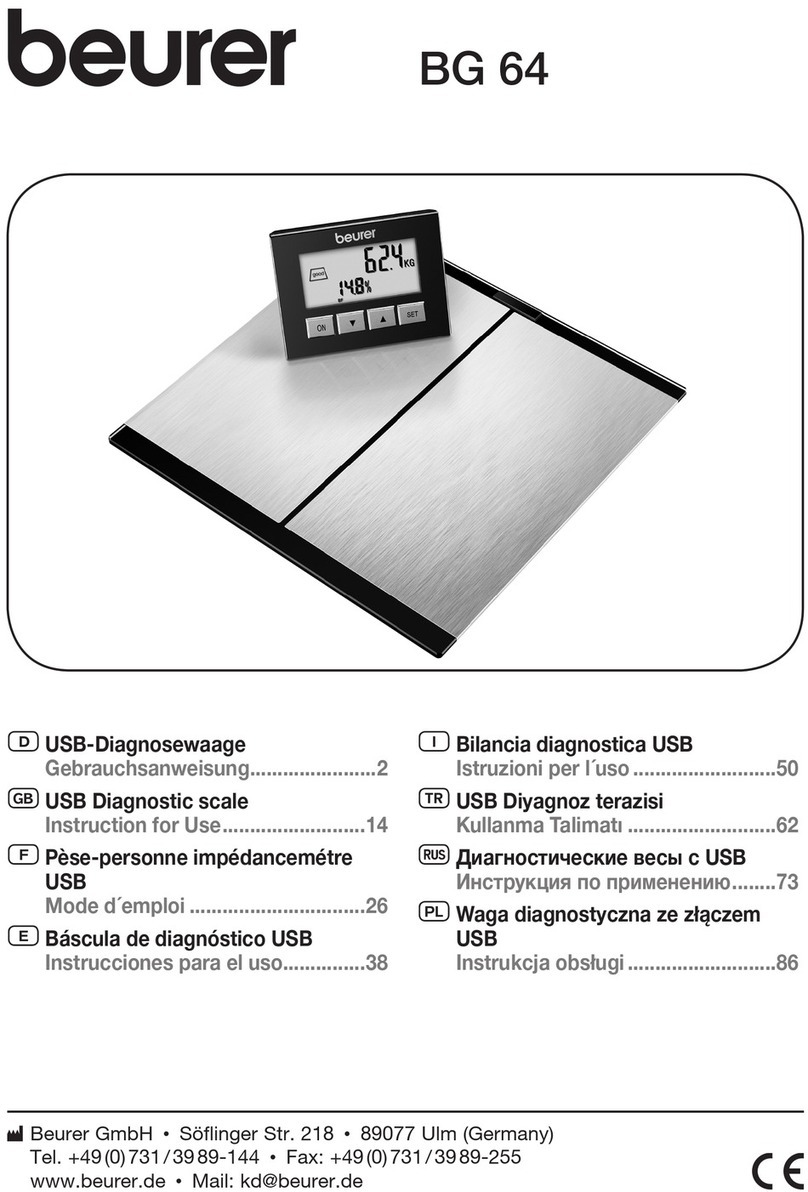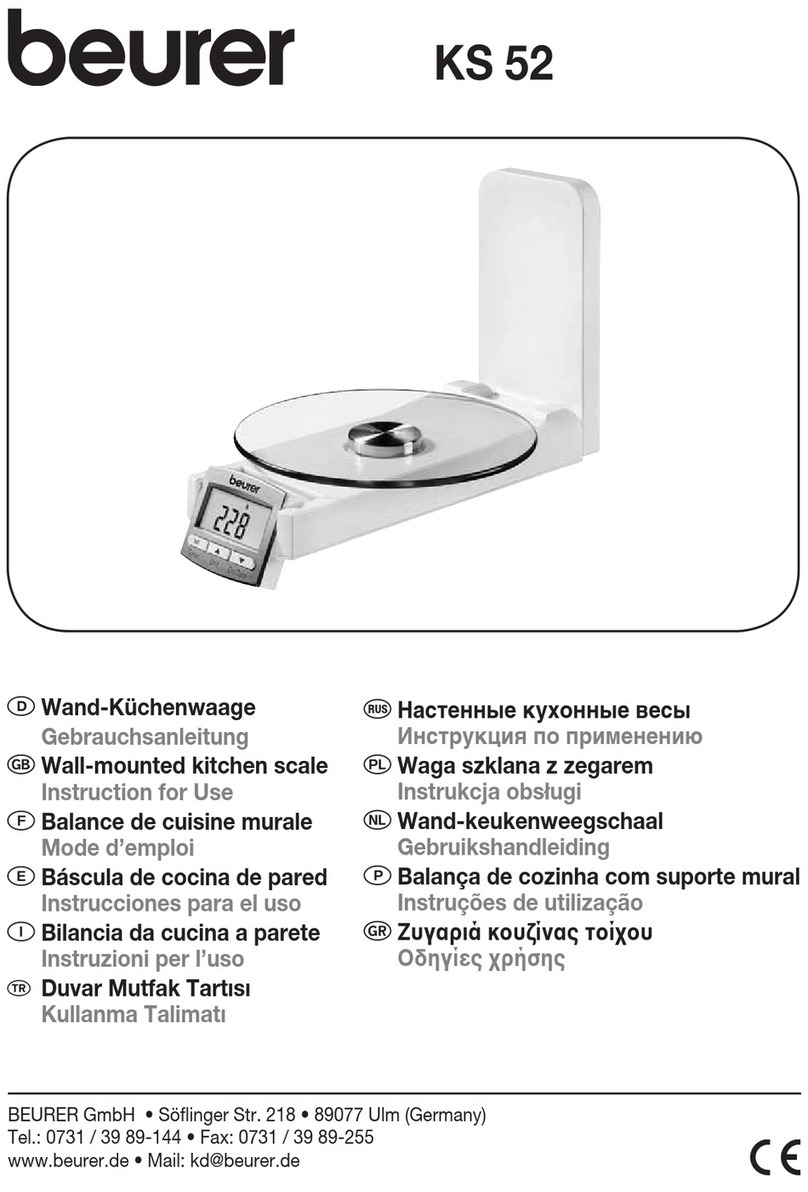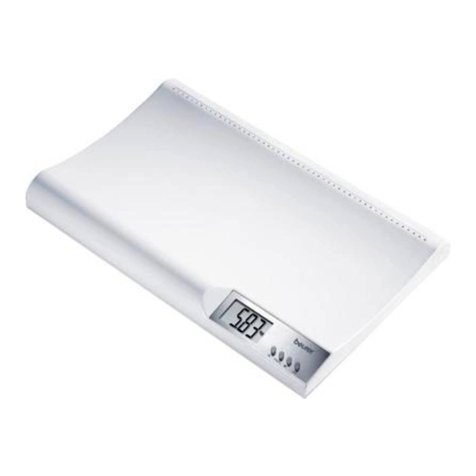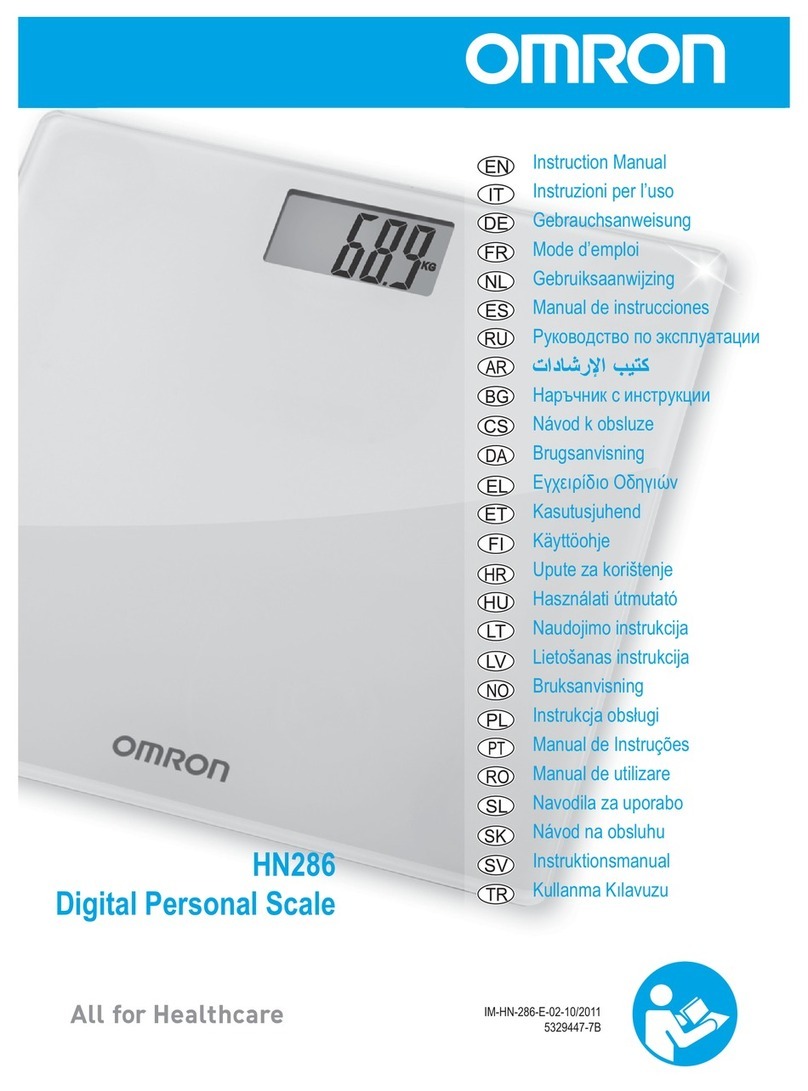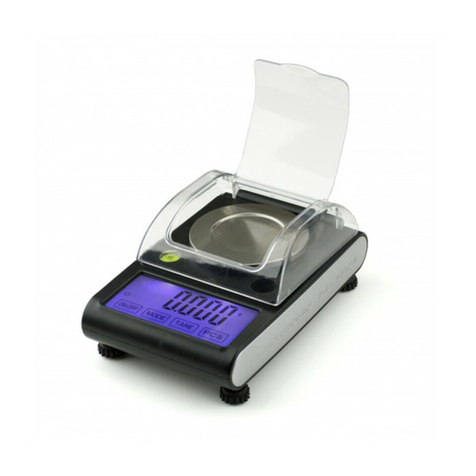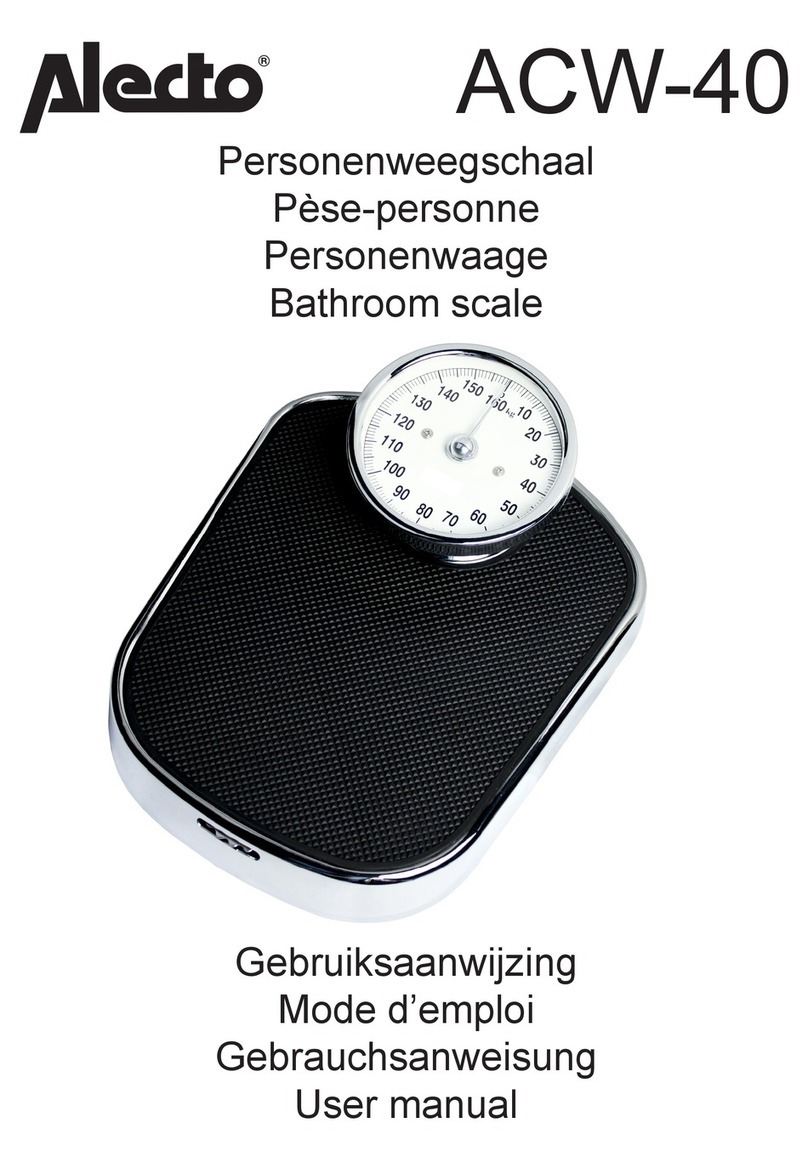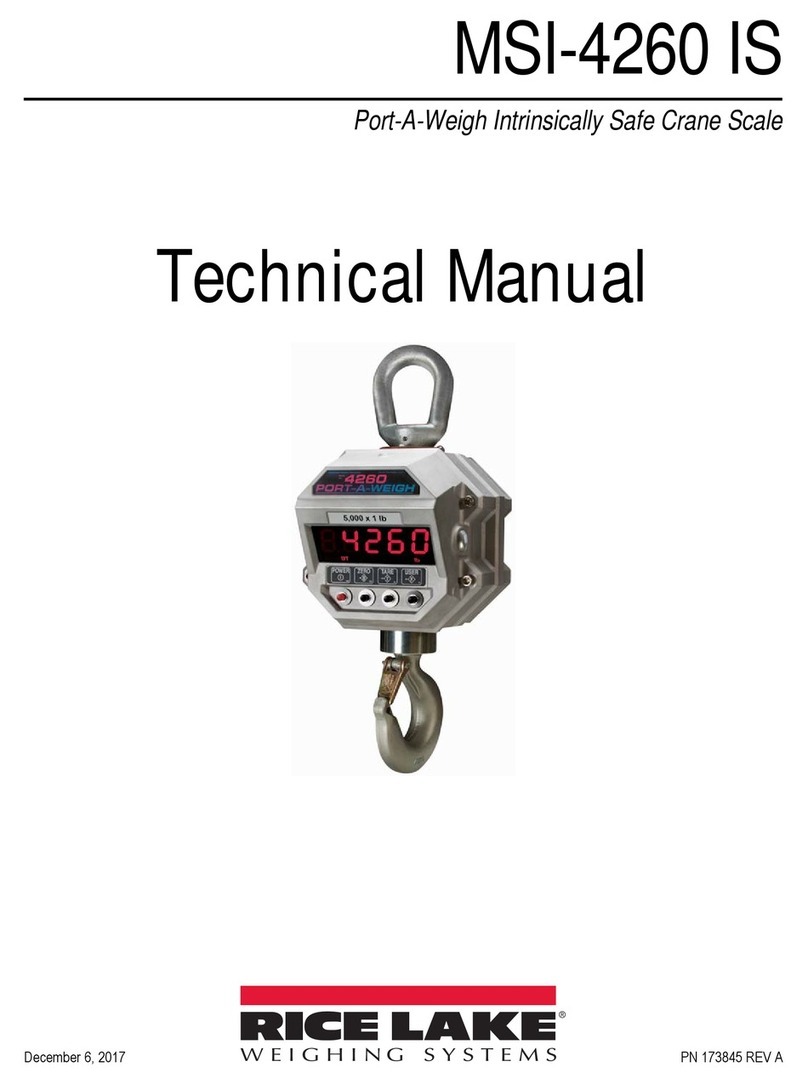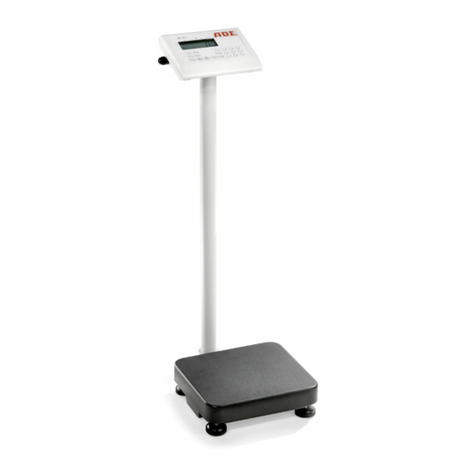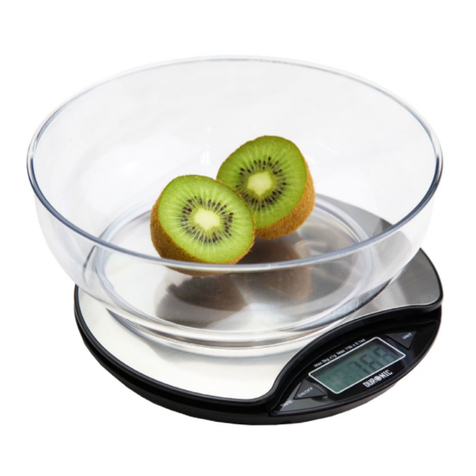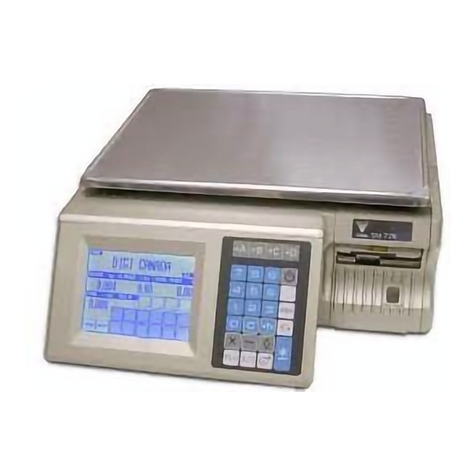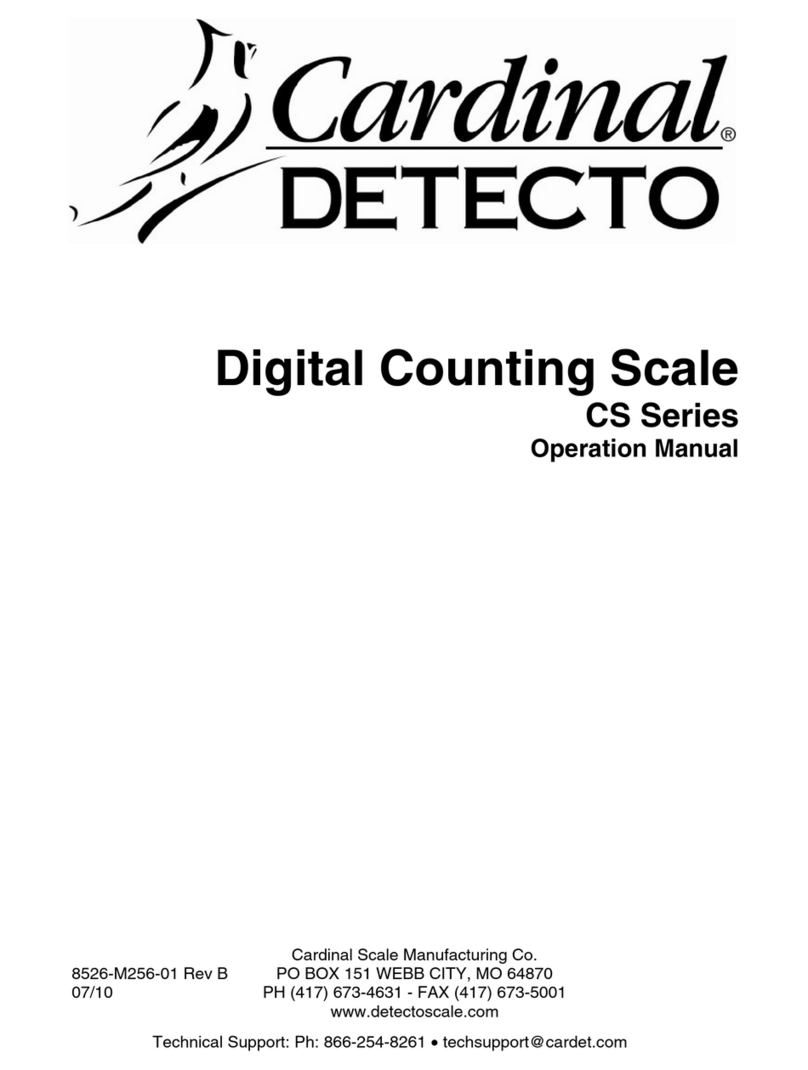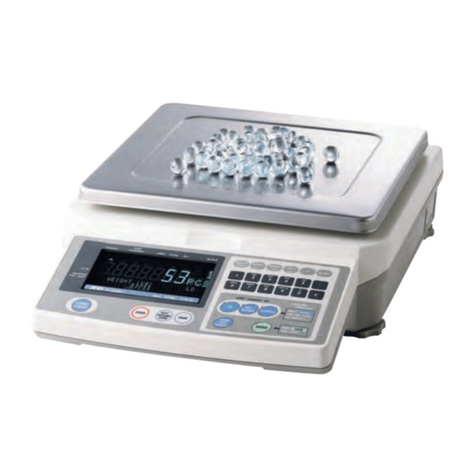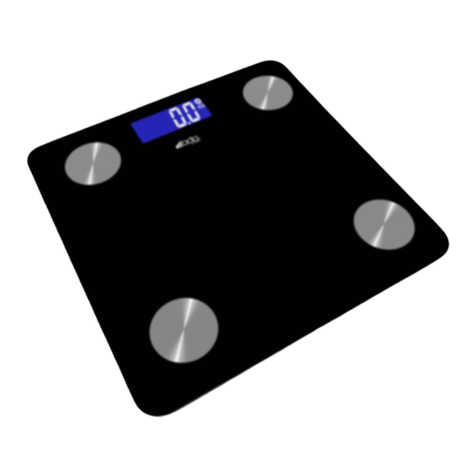9
scope of a few days are considered separately from medium-term changes (in the scope of weeks) and long-
term changes (months). As a basic rule, short-term changes in weight are almost entirely changes in water
content, whereas medium-term and long-term changes may relate to fat percentage and muscle percentage.
•
I
f you experience short-term weight loss but your body fat percentage increases or stays the same, you have
only lost water, such as after a training session, visit to the sauna, or a diet aimed only at fast weight loss.
•O
n the other hand, if your weight increases in the medium term and your body fat percentage drops or
stays the same, you may have built up valuable muscle mass.
•I
f your weight and body fat percentage both fall at the same time, then your diet is working – you are los-
ing fat mass.
•I
deally, you should support your diet with physical activity, fitness or strength training. This enables you
to increase your muscle percentage in the medium term.
•B
ody fat, body water and muscle percentages must not be added (muscle tissue also contains compo-
nents made of body water).
8. Other Functions
Replacing batteries
Your scale is equipped with a low battery indicator. If the batteries are weak, “Lo” will appear in the LCD Display
and the scale will automatically shut off. In this case, replace the batteries with three new “AAA” size batteries.
9. Care and Maintenance
Clean the scale periodically using a damp cloth and, if necessary, a small amount of mild detergent.
IMPORTANT:
•Donotuseaggressivesolventsorcleaningagents!
•Neverimmersetheunitinwater!
•Donotwashtheunitinadishwasher!
Disposal:
Donotdisposeofelectricalappliancesasunsortedmunicipalwaste,useseparatecollectionfacilities.Con-
tactyourlocalgovernmentforinformationregardingthecollectionsystemsavailable.
•
I
f electrical appliances are disposed of in landfills or dumps, hazardous substances can leak into the
groundwater and get into the food chain, damaging your health and well-being.
•T
he device is not suitable for use in the presence of flammable anesthetic mixtures with air or with oxy-
gen or nitrous oxide.
•T
he device requires no calibration.
•T
he device contains no user serviceable parts.
•N
o modification of this equipment is allowed.
•
T
he user must check that the equipment functions safely and see that it is in proper working condition
before being used.
•M
anufacturer will provide circuit diagrams, component part lists, descriptions, calibration instructions to
assist to SERVICE PERSONNEL in parts repair.
10. Troubleshooting Guide
If the scale encounters an error during measurement, the following is displayed:
Display Cause Solution
Only the weight is displayed
– no diagnostic values are
shown
The person is not standing bare-
foot on the scale. Repeat the measurement barefoot,
or with the soles of the feet lightly
dampened if necessary.
The maximum load-bearing
capacity of 330 lb (149.7 kg/23
st:8.7 lb) was exceeded.
The load must not exceed 330 lb (149.7
kg/23 st:8.7 lb)
The fat percentage is outside the
measurable range (less than 5%
or greater than 50%).
Repeat the measurement barefoot or,
if necessary, moisten the soles of your
feet slightly.
